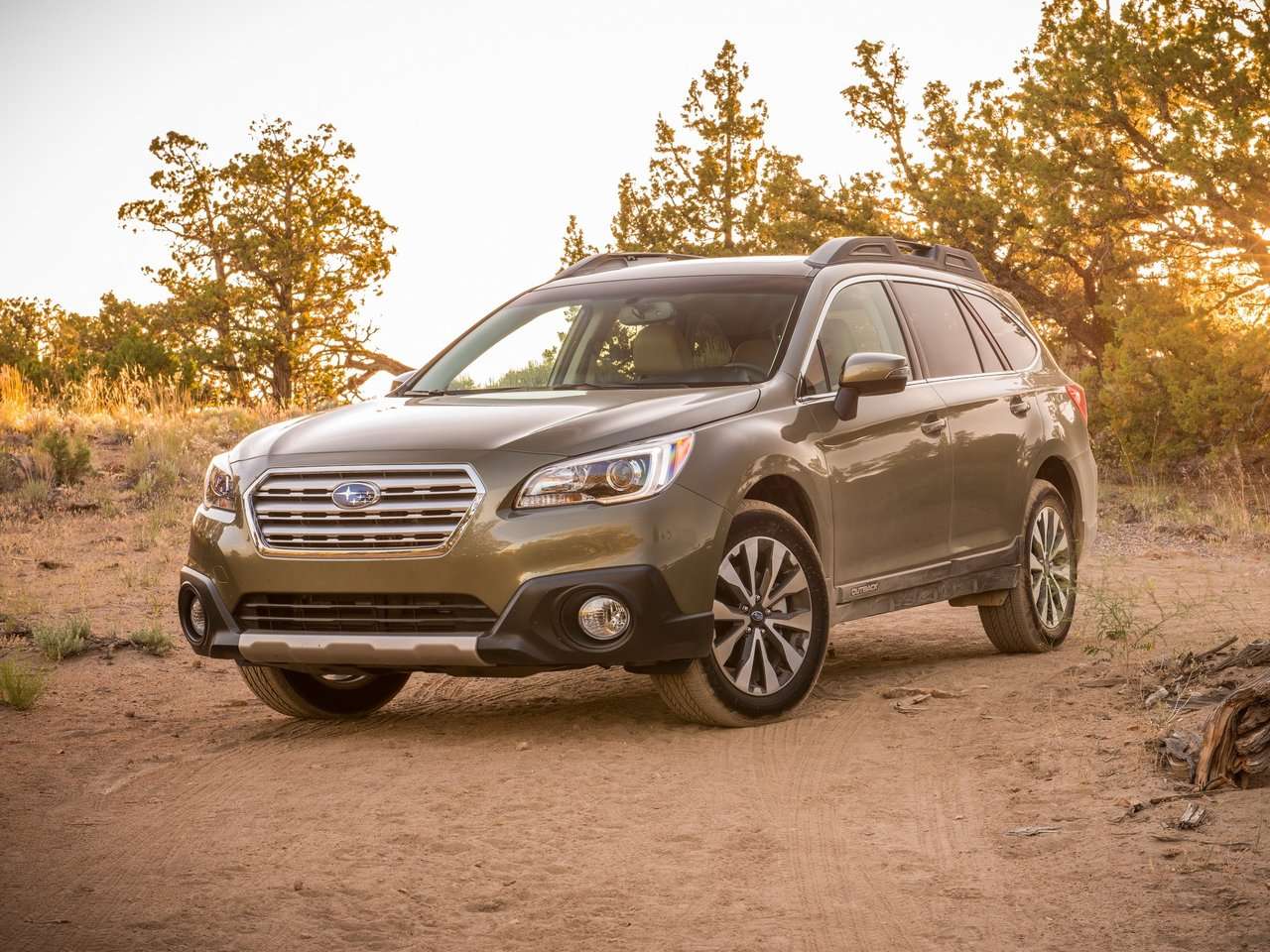Subaru models have repeatedly occupied the top lines of reliability ratings, both in the category of new and used cars. But when buying a used Subaru, customers should consider several points to be satisfied with the purchase. The fifth-generation Outback, which celebrates its tenth anniversary this year, perfectly demonstrates all the typical pros and cons of the Subaru line.
The fifth-generation Outback was presented in 2014 at the New York Auto Show. The Japanese all-terrain station wagon was built based on the sixth-generation Subaru Legacy, which debuted the same year but at the Chicago Auto Show (at home in 2013). Both models use the same boxer engines, Lineatronic continuously variable transmission with fluid coupling (as the only option), and the company’s Symmetrical AWD system. Externally, the new items were also similar and had almost the same interior. The main difference between the Outback and the Legacy was the higher ground clearance, which helped the station wagon cope with mild off-road conditions.
Attention to AWD
Subaru no longer offers permanent all-wheel drive on the Outback, replacing it with automatic AWD. This started from the fifth generation, or more precisely, from its restyling in 2017. Although quite reliable and durable, the drive still requires maintenance: crosspieces, gearbox lubrication, the integrity of the CV joint covers, and the hinges themselves.
Engines
The fifth-generation Outback is equipped with engines dating back barely to the 1980s. There were three of them: a 2.0-liter naturally aspirated 150-horsepower EJ204, a 2.5-liter EJ253 with 170 hp, and the brilliant EJ255 – a 2.5-liter medium-boost turbo engine producing 265 hp. All, of course, are opposed, with a timing belt and camshafts in the heads. The 2.0-liter has four valves and two shafts per block, plus a variable valve timing system. The 2.5-liter naturally aspirated engines are equipped with a pair of valves, and the turbocharged ones – with two camshafts and four valves, also with phase shifters. None of them had hydraulic compensators. New engines are not as critical for oil consumption as they were in the 1990s, but the owner needs to keep an eye on the cleanliness of the radiator both from the inside and the outside.
Transmission
From the second decade of the 2000s, Subaru finally abandoned manual transmissions on naturally aspirated versions, replacing hydromechanics with CVTs, not simple but off-road ones. The used car specialists from Indy Auto Man claim that this is one of the most (if not the most) reliable continuously variable transmissions. Breakdowns are extremely rare, and natural wear and tear begins after 120 thousand miles, if the owner changes the fluid on time and does not burn the box by drifting. Some owners encountered this problem: the engine stalled when slowing down and stopping smoothly, and engine diagnostics showed nothing. The fault was hidden in the variator torque converter. The polymer bushing was worn out and replaced with a classic bearing.
The owner will also face a tricky situation with changing the oil in the gearbox. The original oil is sold only in twenty-liter canisters and costs more than $700 per container. At the same time, the filling volume is a little over twelve liters, but only five, or six at most, can be drained. So you have to either partially change the oil every 30-40 thousand miles or change it entirely, by transmission flush, every 60-80 thousand. It is impossible to skip the procedure – the variator will soon break down.
Body and Interior
Subarists know how quickly the bodies of these magnificent cars may turn into tattered rags. But the Outback is not like that. Even on a ten-year-old model, one may not find any noticeable corrosion. Unless at the junction of the upper edge of the windshield and the roof, where chips bloom. The paintwork quickly rubs off and loses its gloss and shine but does not corrode.
The interior materials last long, and the only annoying thing is the heater flaps, which can either creak or knock, even at low speeds. It is treated by replacing the block, which costs eighty to ninety dollars. Electrics are reliable in Japanese style, and for the same reason, the design and equipment are modest. But the Outback can boast the EyeSight active safety system, which includes adaptive cruise control, lane keeping, obstacle detection, and an emergency braking system, making it a good choice in terms of safety.

